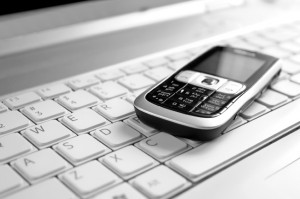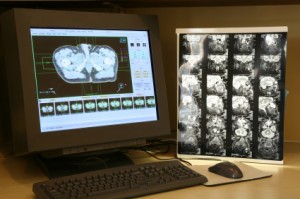 A recent article published on the National Institute of Health website (click here for abstract), confirms low-intensity radiofrequency radiation (RFR), from cell phones and Wi-Fi devices, induces oxidative effects in living cells, including both cancer and non-cancer growths. While this article is not freely available through NIH, the same authors published a nearly identical article a year earlier that is downloadable here and key excerpts are presented below for your reading convenience.
A recent article published on the National Institute of Health website (click here for abstract), confirms low-intensity radiofrequency radiation (RFR), from cell phones and Wi-Fi devices, induces oxidative effects in living cells, including both cancer and non-cancer growths. While this article is not freely available through NIH, the same authors published a nearly identical article a year earlier that is downloadable here and key excerpts are presented below for your reading convenience.
This peer-reviewed, scholarly article clearly shows low-intensity, non-thermal RFR from wireless devices all around us present health risks in ways not previously understood. More importantly, the “safe levels” of exposure, which are based on thermal effects of high-intensity RFR, are more than a thousand times too high for exposure to Wi-Fi and mobile phones.
 Still, with these new insights, scientist do not completely understand how these oxidative effects occur in biological systems. They are simply missing the role of frequency and how resonance affects living cells, which is clearly explained in this research article by NuTesla’s President, James Honeycutt, PhD on Frequencies that Heal and Frequencies that Kill. Interrupting the pseudo-random hopping frequencies of cell phones and Wi-Fi is the best solution to protecting oneself when avoidance is not possible, and is explained here on our website. And Pendulum Plus, which you either wear as a pendant or carry on yourself, is the smallest, most effective, rechargeable Rhythmedics Instrument to provide 24×7 interruption of casual and incidental RFR exposure.
Still, with these new insights, scientist do not completely understand how these oxidative effects occur in biological systems. They are simply missing the role of frequency and how resonance affects living cells, which is clearly explained in this research article by NuTesla’s President, James Honeycutt, PhD on Frequencies that Heal and Frequencies that Kill. Interrupting the pseudo-random hopping frequencies of cell phones and Wi-Fi is the best solution to protecting oneself when avoidance is not possible, and is explained here on our website. And Pendulum Plus, which you either wear as a pendant or carry on yourself, is the smallest, most effective, rechargeable Rhythmedics Instrument to provide 24×7 interruption of casual and incidental RFR exposure.
The following are key excerpts from the publicly available article published a year ago exposing these new risks and the woefully inadequate ‘safety levels’.***
 “Radiofrequency radiation (RFR), e.g. electromagnetic waves emitted by our cell phones and Wi-Fi, are referred to as non-ionizing. This means that in contrast to the ionizing radiation, which does induce ionization of water and biologically important macromolecules, RFR does not have a capacity for such effects. Unlike, for example X-rays, the energy of RFR is not enough to break electrons off the molecules. However, is RFR completely safe for public health? Traditionally, the industry and the public bodies said yes. Nevertheless, new research data change this perception.”
“Radiofrequency radiation (RFR), e.g. electromagnetic waves emitted by our cell phones and Wi-Fi, are referred to as non-ionizing. This means that in contrast to the ionizing radiation, which does induce ionization of water and biologically important macromolecules, RFR does not have a capacity for such effects. Unlike, for example X-rays, the energy of RFR is not enough to break electrons off the molecules. However, is RFR completely safe for public health? Traditionally, the industry and the public bodies said yes. Nevertheless, new research data change this perception.”
“The notion that the low intensity RFR can bring about significant oxidative stress in living cells has been doubted for years. The logic is simple: as low intensity radiofrequency electromagnetic waves are not able to ionize molecules, they can do nothing wrong for the living tissues.  However, during the last decades a worldwide increase in penetration of wireless communication systems, including cellular telephony and Wi-Fi, attracted massive attention to possible biological effects of low intensity RFR. Consequently, the recent epidemiological studies unexpectedly indicated a significant increase in the occurrence of various tumors among long-term and “heavy” users of cellular phones. These include brain tumors, acoustic neuromas, tumors of parotid glands, seminomas, melanomas and lymphomas. Similarly, an increase in tumor incidence among people living nearby cellular base transmitting stations was also reported. As a result, in 2011 the World Health Organization/International Agency for Research on Cancer classified radiofrequency radiation as a possible carcinogen to humans.”
However, during the last decades a worldwide increase in penetration of wireless communication systems, including cellular telephony and Wi-Fi, attracted massive attention to possible biological effects of low intensity RFR. Consequently, the recent epidemiological studies unexpectedly indicated a significant increase in the occurrence of various tumors among long-term and “heavy” users of cellular phones. These include brain tumors, acoustic neuromas, tumors of parotid glands, seminomas, melanomas and lymphomas. Similarly, an increase in tumor incidence among people living nearby cellular base transmitting stations was also reported. As a result, in 2011 the World Health Organization/International Agency for Research on Cancer classified radiofrequency radiation as a possible carcinogen to humans.”
 “Unexpectedly, a strong non-thermal character of biological effects of RFR has been documented. As low as 0.1 μW/cm2 intensity of RFR and absorbed energy (specific absorption rate, SAR) of 0.3 μW/kg were demonstrated to be effective in inducing significant oxidative stress in living cells. This observation is particularly important as the modern interna-tional safety limits on RFR exposure are based solely on the thermal effects of the radiation and only restrict RFR intensity to 450-1000 μW/cm2 and SAR to 2 W/kg. Moreover, studies where thermal intensities of RFR have been used could not reveal oxidative effects, which might point to the variety of molecular mechanisms of action of radiation induced by different radiation intensities.”
“Unexpectedly, a strong non-thermal character of biological effects of RFR has been documented. As low as 0.1 μW/cm2 intensity of RFR and absorbed energy (specific absorption rate, SAR) of 0.3 μW/kg were demonstrated to be effective in inducing significant oxidative stress in living cells. This observation is particularly important as the modern interna-tional safety limits on RFR exposure are based solely on the thermal effects of the radiation and only restrict RFR intensity to 450-1000 μW/cm2 and SAR to 2 W/kg. Moreover, studies where thermal intensities of RFR have been used could not reveal oxidative effects, which might point to the variety of molecular mechanisms of action of radiation induced by different radiation intensities.”
 Pendulum Plus, is the smallest, most effective, rechargeable Rhythmedics Instrument to provide 24×7 interruption of casual and incidental RFR exposure.
Pendulum Plus, is the smallest, most effective, rechargeable Rhythmedics Instrument to provide 24×7 interruption of casual and incidental RFR exposure.
***Yakymenko I, Sidorik E, Henshel D, Kyrylenko S. Low intensity radiofrequency radiation: a new oxidant for living cells. www.scopemed.org/?mno=154583 [Access: July 22, 2015]. doi:10.5455/oams.240314.ed.002